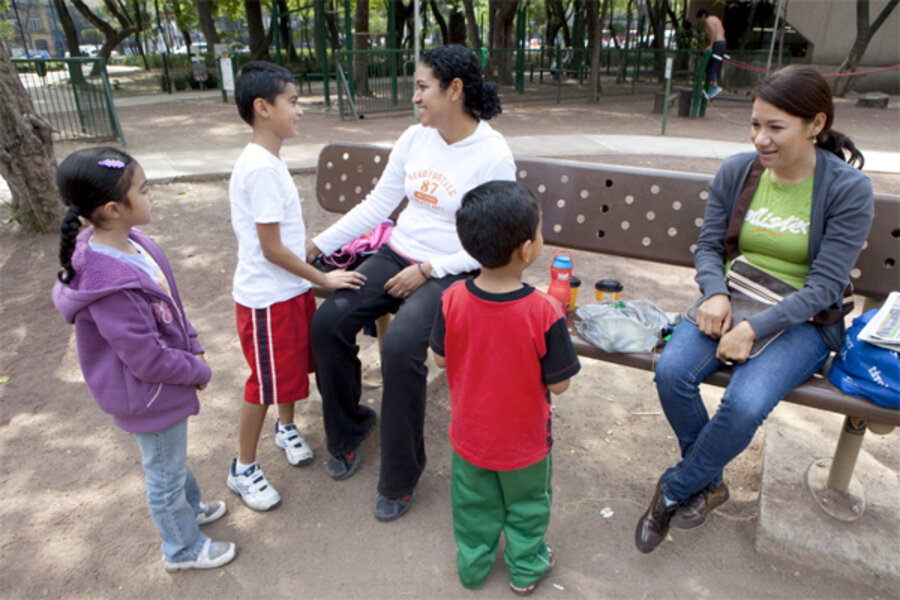By Sara Miller Llana/Staff Writer
Between 2007 and 2008, the first full year of Mexico's military-led struggle against organized crime, drug-related murders rocketed 110 percent. Subsequent years offered little solace: The homicide tally rose by 63 percent between 2008 and 2009, and by 70 percent the following year.
The numbers had been so grim during former Mexican President Felipe Calderón's United States-supported operation that when the annual rate of increase in murders dropped to 11 percent between 2010 and 2011, his administration sought to sell it as a sign of success. "It's the first year that the homicide rate increase has been significantly lower compared to previous years," Mexico's attorney general's office said at the time.
But now there might be more than public relations at play: For the first time in six years, Mexico has seen a dip in its national homicide rate, with murders dropping by 8 percent in the first half of 2012, compared with the same period in 2011. The local daily Reforma, which tallies drug-related deaths specifically, has counted 8,352 drug-related homicides through Oct. 26, which would mean an 18 percent decrease in drug-related killings compared with 2011, if the pace stays constant.
Mr. Calderón, who left office Dec. 1, furiously tried to communicate in his last months on the job that Mexico is at a turning point. To a group of Jewish community leaders in August, he proclaimed that Mexico had reached its peak violence, and that the country is likely to see a downward trend, a scenario he dared to say was faster than what happened in Colombia. "It took Colombia, more or less, 28 years to reach its peak and register a turning point in violence," he said. "Mexico has suffered a lot, but it's taken less time."
Has "Calderón's war," as it's often called, been won? Calderón's strategy focused on taking out "top leaders." He captured dozens of most-wanted traf-fickers, but for most of his six-year term, called a sexenio, that did little to reduce violence. In fact, it caused mayhem within cartels, leading to deadly power struggles. But sustained pressure has perhaps helped the strategy turn a corner.
"The pressure that the government has put on some organizations, the most violent ones, has had some effect," especially on the Zetas, "who kill the most people," says Jorge Chabat, a drug-trafficking expert at the Center for Economics Research and Teaching in Mexico City.
Not everyone is ready to declare success. The death toll is at least 60,000, and could be much higher. The government stopped releasing drug-related deaths in the fall of 2011, casting doubt on the figures. Likewise, it is unclear to many why the numbers have gone down: Is the decrease due to a stronger state, or to calculations made by criminal elements?
Erubiel Tirado, a security expert at the Iberoamerican University in Mexico City, has long criticized the government's top-down approach, arguing that the groups will transform themselves as long as impunity is rampant, job opportunities scant, and US demand for drugs insatiable. What's worse, he says, is that Mexico could be seeing a mere pause in violence, while a new government takes office and criminals assess whom they can and can't work with. "The drop in murders, if there is one, does not bring me calm; it brings me more fear," he says.
Still, as the new president, Enrique Peña Nieto, begins his term, Mexico is experiencing a rare moment of optimism on the security front. Mexicans have reported feeling personally more secure, including feeling safe walking alone in the late afternoon and early evening, in monthly public-security perception polls carried out by the national statistics office. The latest month on record, October, measures 104.4 points, an increase of 7.6 percent when compared with the same month in 2011 and among the highest ratings in the past four years.
And in some parts of the country, notably Ciudad Juárez, which was once considered among the most deadly cities in the world, improvements are clearly visible. The city has registered a projected rate of 1,132 deaths on average this year, compared with 1,940 the year before, and 3,100 at its peak in 2010. That's a decline of 42 percent and 40 percent respectively, according to the Trans-Border Institute at the University of San Diego, which analyzes Reforma's media tallies.
"Today there are restaurants open and full. In 2010 there were not. People were fleeing," says Eric Olson, the associate director of the Mexico Institute at the Woodrow Wilson International Center for Scholars who was in Ciudad Juárez recently. "People are excited that they have traffic jams now."






